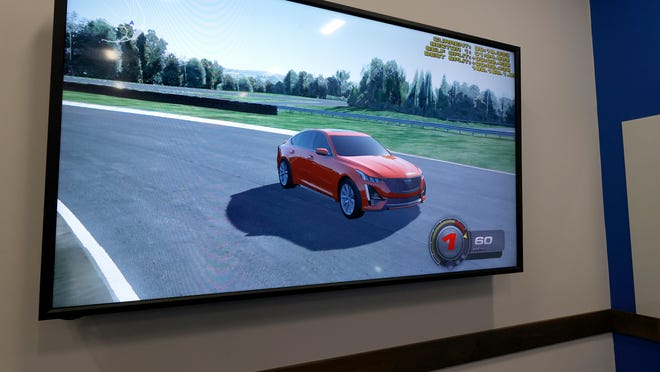General Motors is transitioning to an all-electric car company by 2035 and it’s not alone. Many of its rivals are also racing head-on into the EV market.
There’s a race to get new products with cool innovations to market fastest. One way to do that is by using virtual technology and simulators.

Here are some cool facts from part 3 of the Milford Proving Ground series from the Detroit Free Press about how GM is increasingly relying on virtual technology to speed its transition.
Go inside Building 144 and it is GM’s future
Building 144 sits near the entrance to the GM Milford Proving Ground overlooking the Milford Road Course, a racetrack modeled after the famous Nurburgring. Inside are hundreds of computers that can simulate almost any driving function on a car. It’s GM’s vehicle testing lab.
More:GM’s virtual simulation lab key in developing future EVs and AVs
Get behind the wheel of the simulator and drive on the moon
Building 144 also houses GM’s Driver-in-the-Loop Laboratory. It resembles a mini NASA control center with two rows of stadium seating. Behind a glass partition is the simulator — a car with two seats, a steering wheel, a throttle and brake about 5 feet off the ground atop a “motion table,” which is a moving platform that simulates different road surfaces. GM bought the simulator six years ago and uses it for just about everything, including an all-electric moon buggy for the future Artemis astronauts.
Some cool stuff GM has already developed using the simulator
GM engineers used the simulator to create a new suspension for the 2023 Cadillac Lyriq EV. And engineers went off-roading in a Hummer using virtual technology to refine and perfect the CrabWalk — a four-wheel steer mode that allows the vehicle to move diagonally — long before they ever tested it on a road in a prototype.
GM’s vehicle development at Milford is global
At all the labs, the engineers can input vehicle data from any GM facility in the world and use virtual technology to test it and provide feedback to that facility. They can also “teleport” themselves virtually to roads on Earth (or on the moon) for simulated test drives. It’s sort of the ultimate video game.
Simulator and virtual technology bring down costs
There are advantages to using virtual technology and a simulator. One is speed to market. Engineers can test and develop technology faster if they can simulate it rather than having to keep building prototypes. The time to market for a new vehicle is now close to two years as opposed to five years or longer in the 1990s. Also, there are cost savings. It can cost up to $100,000 to build one prototype vehicle.
Then there is safety. The performance cars that race around Milford Road Course at speeds that hit about 188 mph do so safely because most of the ride and handling was developed and tested inside the building.
More:GM Proving Ground in Milford is full of secrets — and few employees get to see it
More:What it takes to be a top test car driver at GM’s Milford Proving Ground
Contact Jamie L. LaReau: jlareau@freepress.com. Follow her on Twitter @jlareauan. Read more on General Motors and sign up for our autos newsletter. Become a subscriber.
